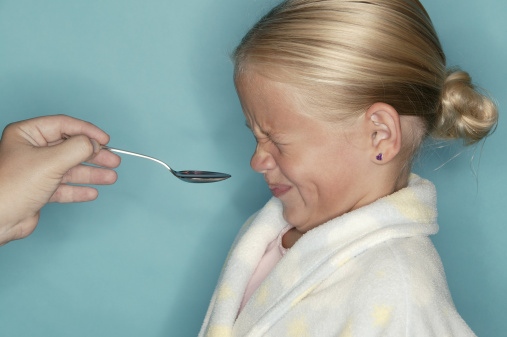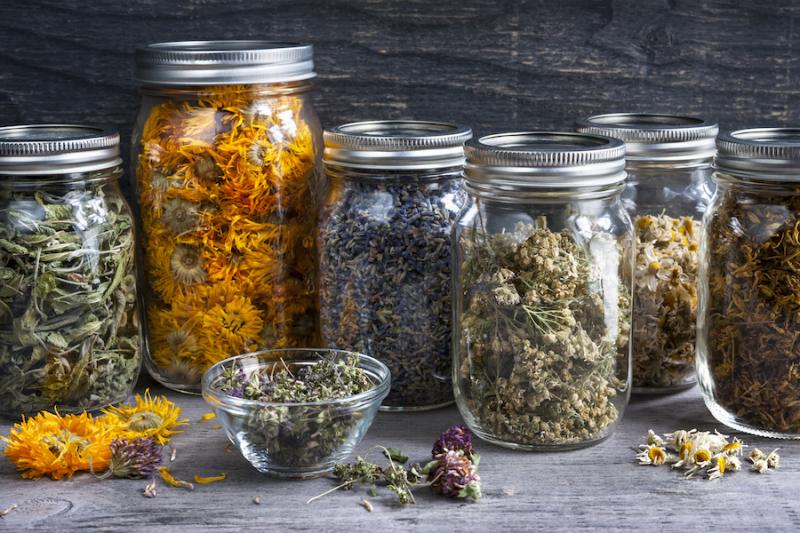 One of the most difficult challenges a parent who wants to use herbal remedies faces with their kids is, “how do I get my child to to take it?” While there are a number of tricks for getting children to use herbs, I find that the easiest and safest method of administering herbs to children is to make herbal glycerites.
One of the most difficult challenges a parent who wants to use herbal remedies faces with their kids is, “how do I get my child to to take it?” While there are a number of tricks for getting children to use herbs, I find that the easiest and safest method of administering herbs to children is to make herbal glycerites.
Glycerites are also a great way to make herbal preparations for adults who dislike swallowing capsules. It has the advantage over making tinctures because 1) it's faster and 2) the sweetness of the glycerin helps hide the taste of the herbs.
Glycerin is not a sugar, so it won't spike a person's blood sugar or feed yeast infections. Glycerin does not have the toxicity of alcohol making it a safer choice for infants and small children. Being a natural component of fats, even babies have the metabolic pathways to process glycerine. And finally, because glycerine is slightly sweet, it acts as like that “spoonful of sugar that helps the medicine go down.”
In addition to being sweet and non-toxic, glycerine has some very beneficial properties. First, when made vegetable oils, it is suitable for vegetarian and vegan diets. (Most capsules are made with animal products.) Dr. Edward Shook in his Advanced Treatise in Herbology claimed that herbal glycerites helped to rapidly remove inorganic drugs and other toxins from the body. My own experience suggests this is true. Glycerine helps the body burn fats and stabilize blood sugar levels, too, so unlike sugar, it's not going to contribute to hypoglycemia, diabetes, or obesity.
I used to be able to order pure vegetable glycerin at the drugstore, but it has become harder to find at drugstores. Some health food stores carry it, too. It is easily found for sale on the internet.
Properly made glycerites will keep for several years if you store them in tightly sealed, dark glass containers in a cool, dark place. I've kept glycerites I've made for 3-5 years and have had no sign of spoilage. However, I've learned that if you don't use a high enough ratio of water to glycerine, glycerites can grow mold. Follow the directions I give in this article and you shouldn't have any problems.
My technique for making glycerites helps preserve volatile components and makes a much stronger glycerite than an “open pot” method. I call the preparation and Sealed Simmer Glycerite and it is easily done using home canning equipment.
 Materials Required
Materials Required
Here are the materials you will need:
- Canning jars (1/2 pint, pint or quart, depending on how much you want to make) with clean rings and lids
- A pot or pan big enough to hold the jars. For small batches, I use a regular kitchen pot, for larger batches I use a steam or boiling water bath canner, used to can fruits, jams, and pickles.
- Purified water (buy distilled water from the store or run your tap water through some kind of water treatment appliance, such as a reverse osmosis unit).
- Food grade vegetable glycerin
- The herbs you wish to extract. These may be fresh or dried.
- Cloth for straining. Cheesecloth works okay but I prefer a piece of soft flannel, the cloth baby diapers used to be made from. You can also strain the herbs through an old white cotton sheet. Make sure the cloth is clean and sterile though.
Making the Glycerite
To make your sealed simmer glycerites follow the following steps:
- Wash the jars, rings, and lids thoroughly in hot, soapy water and rinse in hot water so they are clean and sterile, just as you would do if you were going to do home canning.
- Place the herbs in the jars. For fresh herbs, you pack the jar full of the herb. With dried herbs you use about one ounce of dried herbs per pint.
- Fill the jar (leaving about 1/2 inch of headroom) with a mixture of glycerine and water. For dried herbs, use a mixture of 60% glycerine and 40% water (6 cups glycerine to 4 cups water). For fresh herbs, use a mixture of 70 glycerine to 30% water. (If the fresh herbs are really juicy plants you may want to use 80% glycerine-20% water.) The goal is to have the finished liquid be 60% glycerine, so the extra glycerine is to offset water from the fresh plants. If you have a big enough pot or you are using a canner, you can prepare several different jars of herbs at the same time.
4. If you are using a regular pot, put a few extra canning rings on the bottom of the pot (so the jar(s) won't sit directly on the bottom of the pan) and place the jar(s) of herbs you're going to extract into the pan on top of the rings. If using a pot, fill the pan about 1/2 up the sides of the jars with water. You can process as many jars as your pan will hold. If using a steam or water bath canner follow the same directions you would follow for canning food. - Bring the water in the pan to a boil and then reduce to a simmer and simmer the jars at a low boil for 20-40 minutes.
- Remove the jars from the pan of water using a hot pad or jar lifter to protect yourself from getting burned. When the jars are cool enough to handle, strain the herbs out of the solution using the cheesecloth or other material you have for straining.
The resulting liquid should be put into a bottle with a tight-fitting lid and stored in a cool, dark place. It should remain good for about two to three years.
In making glycerites for children it is wise to consider taste when blending the herbs. I always combine nasty tasting plants such as bitters with sweeter and more mild herbs. Licorice, fennel, peppermint, and spearmint are great herbs to use to flavor glycerites for children. For more information on how to make herbal preparations like sealed simmer glycerites purchase the book Modern Herbal Dispensatory by Thomas Easley and Steven Horne.
Sources for Glycerin
Steven's Articles
-

-
Understanding Caffeine & Cellular Adaptation
Preserving the power of caffeine's buzz and the…
September
-

-
Horseradish
A pungent spice for aiding protein metabolism…
-

-
Banaba or Crepe Myrtle
A beautiful tree from Southeast Asia whose leaves…
August
-

-
Monkeyflowers
Flower essences to help see ourselves more clearly…
-

-
Mariposa Lilies
Strengthening the bond between mother and child…
-

-
The Noble Bay Leaf
A common kitchen herb for aiding digestion and…
-

-
Epimedium: Horny Goat Weed
A circulatory stimulant and kidney yang tonic…
July
-

-
The Medicinal and Nutritional Benefits of Apricots
A nutritious fruit and valuable medicinal seed for coughs
-

-
Dogwoods
Asian dogwood is used to stop excessive discharge,…
June
-

-
Neem: The Village Pharmacy
A popular Ayurvedic remedy for dental and immune…
-

-
Spilanthes: The Toothache Plant
A traditional remedy for teeth and gums, as well…
-

-
Forsythia
An anti-inflammatory, fever-reducing, and infection fighting herb
May
-

-
Buckwheat (Kashi)
A delicious, high protein, gluten-free, gut-healthy food
-

-
Leaky Gut Syndrome
Plugging the leaks on the underlying cause of…
-

-
Storksbill
An edible, medicinal, weedy herb, helpful for…

